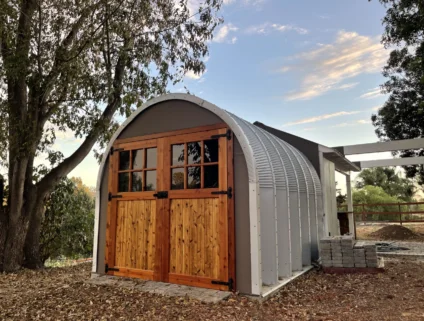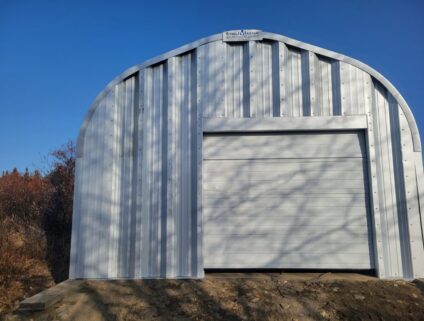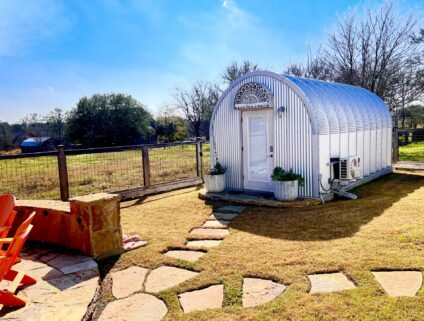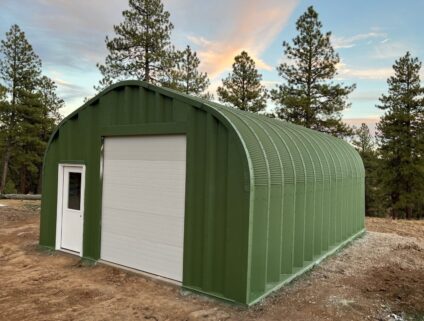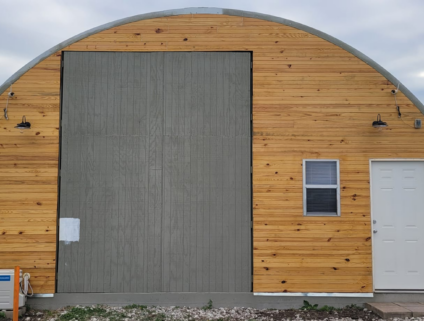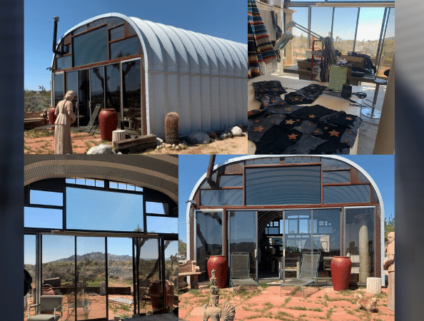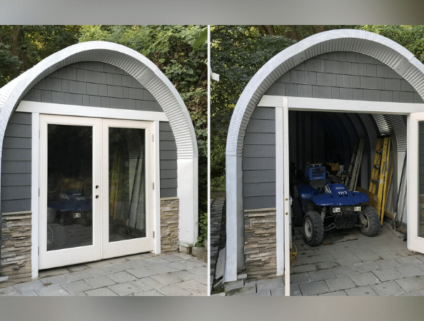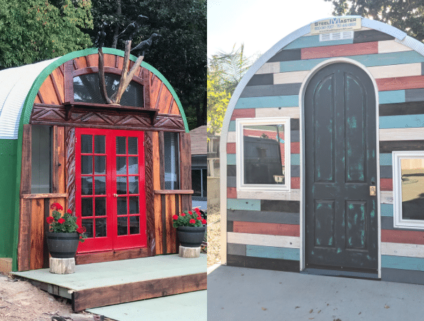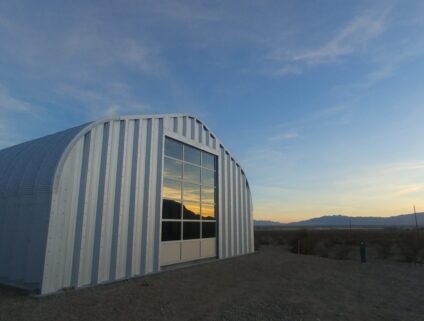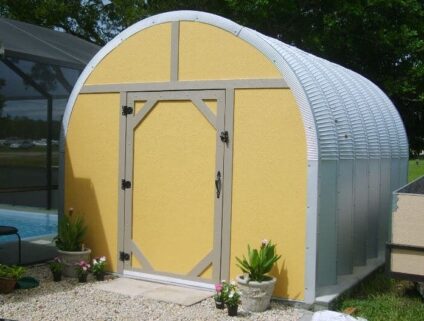How to Choose an Outbuilding That Increases Property Value
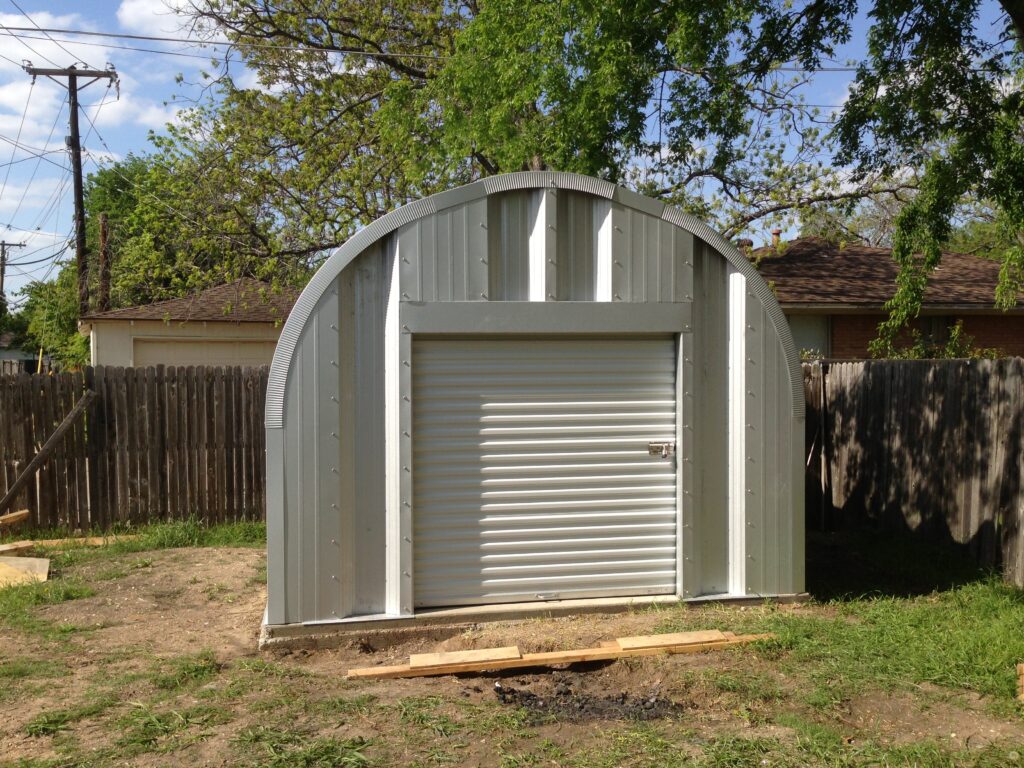
Choosing the right structure for your outbuilding can significantly increase your property’s value if it’s functional durable and of course, looks great!
Joseph Y. of Dallas, Texas, offers firsthand insight into making a choice that truly pays off. Joseph’s experience highlights the importance of choosing a building to increase his property value after he ditched his dilapidated wooden shed for a steel building.
Here are five tips Joseph learned to help you choose an outbuilding that will serve your needs and boost your real estate value.
1. Look for Available Certifications In Your Area
An important factor in increasing property value by adding an outbuilding to your property is the longevity of the building which won’t be a huge insurance liability. When researching durable buildings, look for buildings that have a High-Velocity Hurricane Zone Certification. This ensures the building is engineered to withstand winds up to 170 mph.
Additionally, certifications from organizations such as the American Institute of Steel Construction (AISC) and Underwriters Laboratories (UL) should be sought to validate the structural integrity and fire resistance of steel buildings. Adding a building to your property without these certifications could be more of liability than an asset.
Joseph explains, “Having sat on the roof of my shed while tightening bolts, I can attest to the strength of a SteelMaster. Your brand had the best reviews for ease of construction and strength. There is no way I would ever sit on the roof of sheds sold at any of those ‘big box’ stores.”
2. Use Open Layouts To Make It Multi-functional
Outbuildings can serve multiple purposes—storage, workshops, or recreational spaces and the chances are that whatever you need your building for won’t be what the next owner needs it for. Select a building design that can be flexible in its use. Quonset huts have no interior walls so the open space inside can always be customized to your purposes without limiting any future uses.
This was true in Joseph’s case. He explains, “My wife loves to garden. Having the SteelMaster keeps our garage free of gardening tools and clutter. Plus, I’ll have room for parts come autumn, when I start collecting them to restore my classic old, rusty truck.”
3. Consider Curb Appeal
The visual impact of an outbuilding plays a significant role in property value. An aesthetically pleasing outbuilding can complement your property and enhance its curb appeal. While looks are subjective, making sure your building is cared for is a great start.
Consider designs that allow you the flexibility to match the design of your home or any existing buildings on your property. Steel building kits can be sold open-ended, giving you the flexibility to build custom end walls. Custom endwalls can add an artistic and ultimately more valuable “look” to your building.
“My old wooden shed pales in comparison to my new steel and metal SteelMaster,” says Joseph. “Potential buyers are disappointed with the wood one I’m trying to sell when they see my SteelMaster, making it more difficult to sell. I can see it in their faces.”
4. Add Climate Control
Unless a building is being used strictly for storage, some sort of climate control will greatly enhance a building’s overall value. An outbuilding should offer both utility and comfort. When choosing the building materials for your outbuilding, consider its ability to add insulation and ventilation options. Depending on the size and use, your building should also have the ability to add HVAC systems. Not only will this make spending time inside your building more comfortable, but it also ensures that the building remains in good condition for longer.
Wooden, fabric or cheap metal buildings can be harder to both insulate and regulate the temperature in, so choose a building that can better adapt to the climate, like steel. Steel buildings don’t need insulation, vents or HVAC but can easily have them as part of the building design.
5. Look for Low Maintenance Materials
An outbuilding that requires minimal upkeep is a valuable asset. Choose materials and designs that minimize maintenance needs, as this will save you time and money in the long run and be much more appealing to the next property owner.
Steel outbuildings, for instance, are known for their low-maintenance properties, resisting rust and decay while being easy to clean. This ease of maintenance can be attractive for potential buyers and help preserve the building’s value. Steel Quonsets also use arches instead of walls and roofs, so there’s never a need to replace your roof or fix your flashings.
6. Verify Zoning and HOA Regulations
Before finalizing your choice, ensure the outbuilding complies with local zoning laws and homeowner association (HOA) regulations. This can prevent future complications and ensure that your investment adds value rather than costing you money.
Know the section and text in any pertinent regulations and, if needed, check with officials that your outbuilding is compliant. Having this information as part of your building’s overall documentation will put the new owner at ease and make it easier to sell your property at the desired price.
Categories

